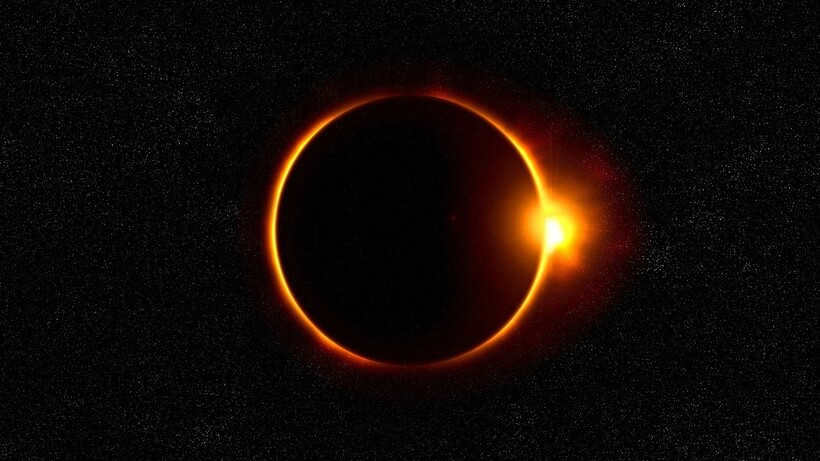It is crucial to follow the warning on your telescope that says, “Never point the telescope at the Sun!” This warning is usually in the form of a bright sticker or label on the tube. However, with proper preparation, you can safely observe the Sun using your telescope. This article will guide you through the process of retrofitting your telescope for solar observations, as well as provide important safety rules to follow. Additionally, we will explore the fascinating phenomena that can be seen when observing our daytime luminary.
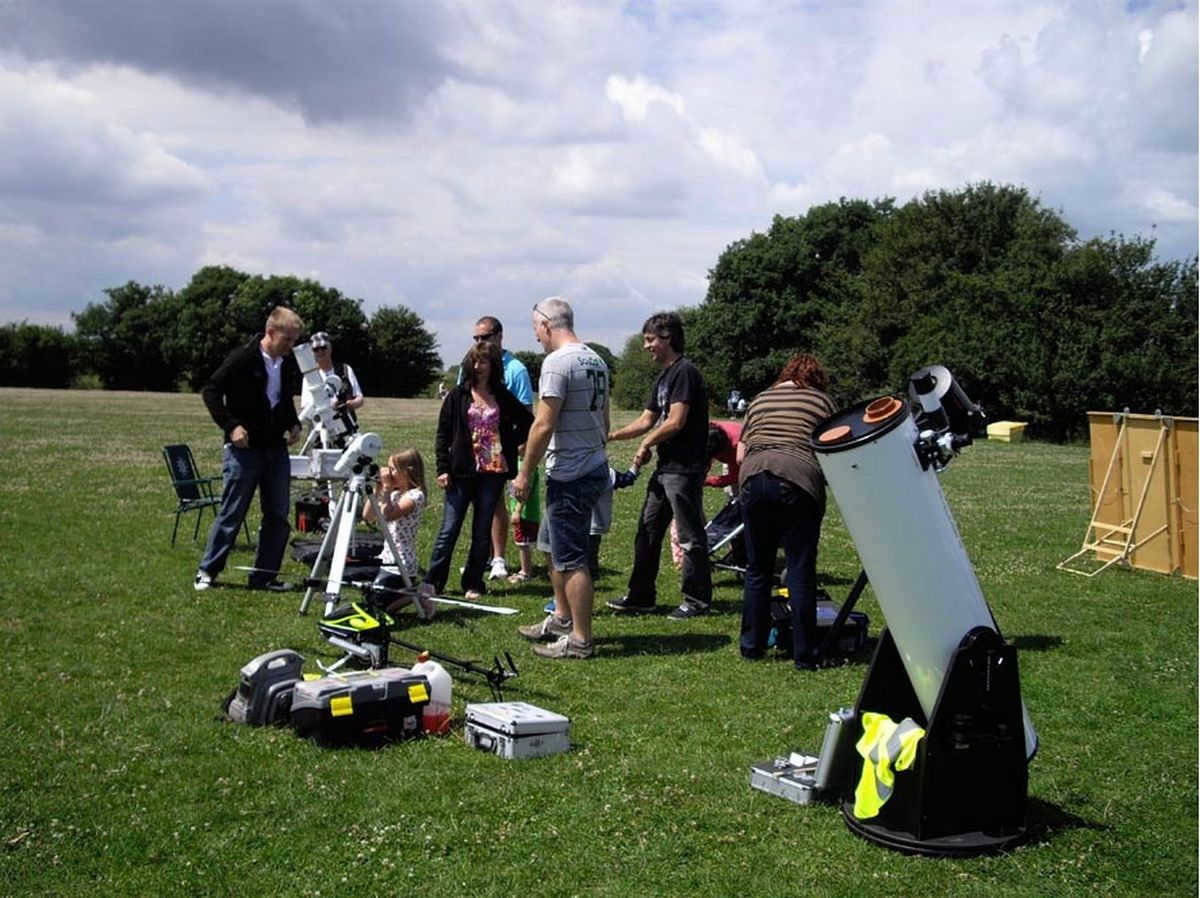
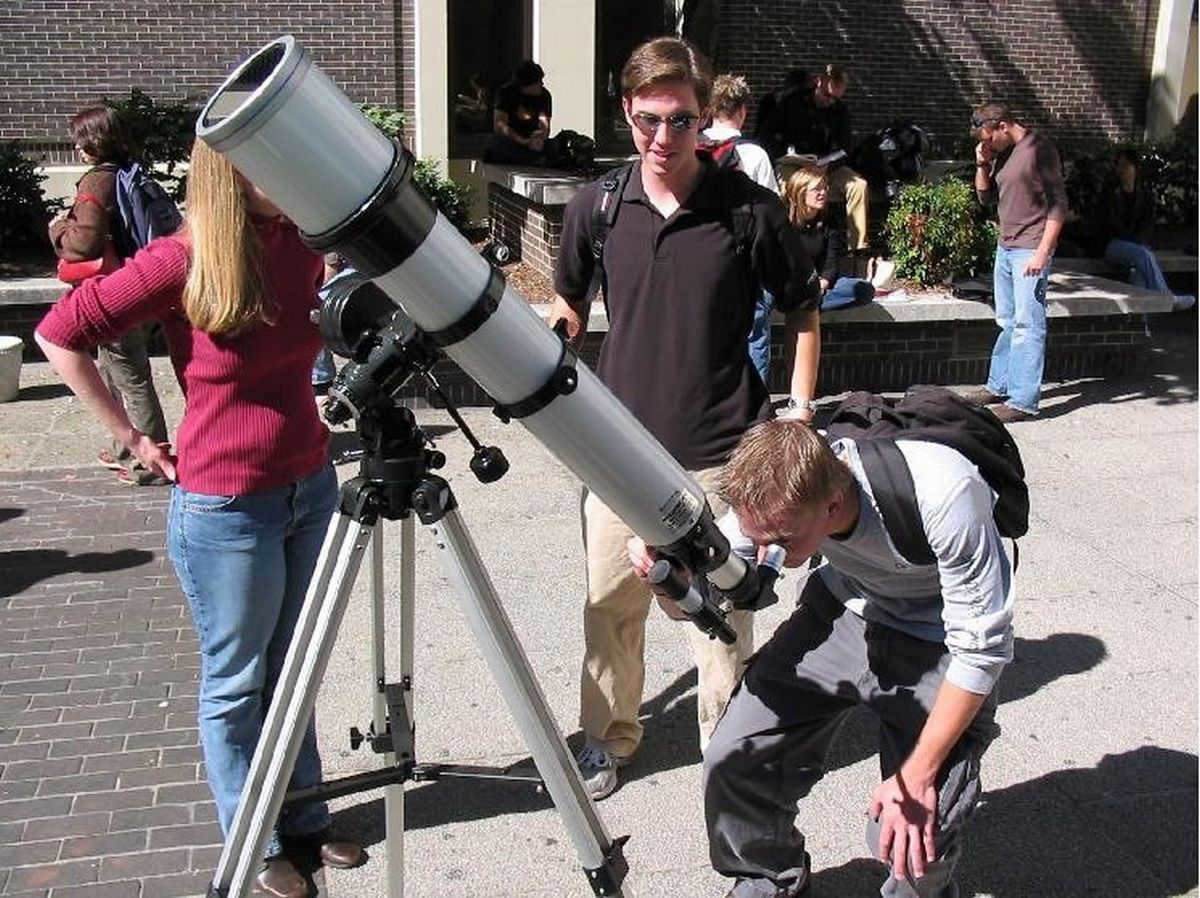
What makes the Sun so fascinating?
Stars, even the ones closest to us, are positioned so far away that no matter the telescope we use to observe them, they will always appear as mere points of light, visible even to the naked eye. The Sun, however, is a different story. It is accessible for thorough examination on any clear day, allowing for prolonged and comfortable observations.
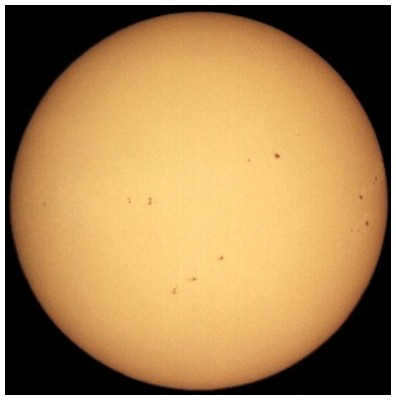
The most fascinating things to observe are definitely the renowned sunspots. You can easily see entire clusters of sunspots with small telescopes, and occasionally even large formations can be visible to the naked eye. The first recorded observations of sunspots on the Sun date back 800 years before Christ in China. During sunrise and sunset, our daylight appears somewhat dimmer due to various phenomena happening with solar rays in the Earth’s atmosphere. Sometimes, during these times, you can spot small black spots on the yellow-orange disk, which are actually massive disruptions in the Sun’s magnetic field.
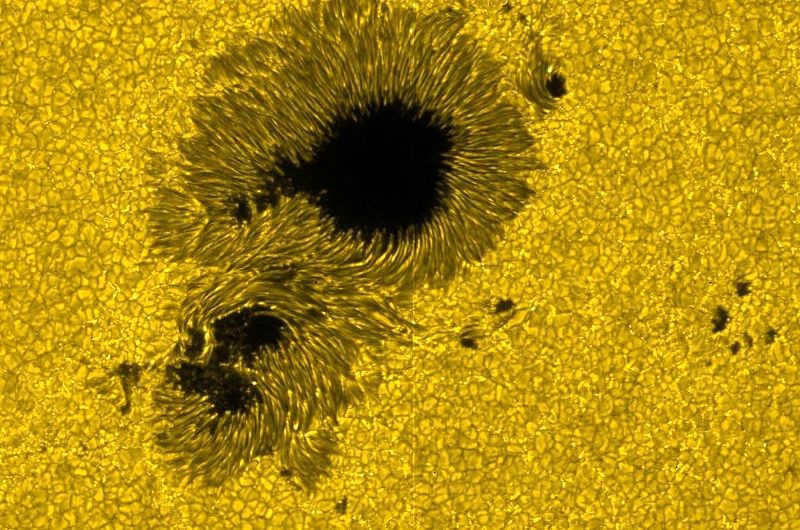
Observing the sun through a telescope is a captivating experience, as it provides a glimpse into the dramatic happenings of the universe. Sunspots are particularly intriguing. These spots are characterized by the ejection of intense magnetic fields, which results in a temperature decrease of about 1500 degrees Celsius compared to the average temperature of the sun’s surface, which is approximately 5700 degrees Celsius. The contrast in temperature is what gives the spots their dark appearance against the glowing backdrop of the sun.
The process begins with disturbances in the magnetic field that follow the Sun’s cycles of activity. These disturbances cause magnetic lines to break through the Sun’s visible surface, known as the photosphere, and enter the corona, carrying plasma matter with them. This results in the formation of flares, where the strength of magnetic induction rapidly increases and small spots of disturbance appear. These spots can persist for hours or even several months. The most powerful magnetic lines extend far beyond the corona, giving rise to the awe-inspiring and enigmatic prominences. The effects of these magnetic disturbances reverberate throughout the entire solar system, and people on Earth are already aware of them.
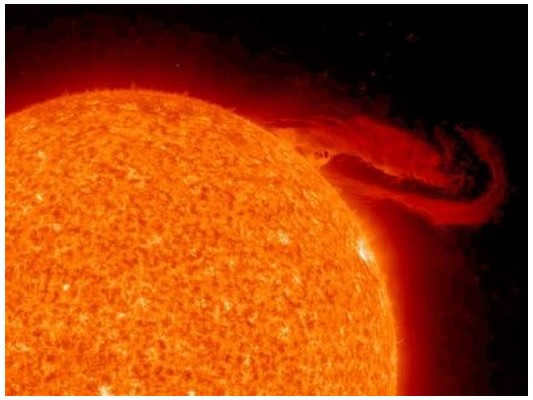
The Sun, similar to all other stars, is extremely fascinating, and the physics of the phenomena happening within its core remains one of the most perplexing puzzles for the scientific community. While observing a faraway galaxy or a star cluster, we can witness the same phenomena that our ancestors saw many millennia ago; however, the Sun is exceptionally dynamic, undergoing changes every hour and every minute. The ability to predict the upcoming surprises of this celestial body has only been acquired by mankind recently.
“Astronomers have a unique perspective on the Sun – they observe it with both their right and left eye,” is a humorous statement commonly shared among enthusiasts of astronomy. However, like all jokes, there is some truth behind it. Prolonged exposure to the Sun or direct observation without proper protection can have adverse effects on eyesight. When astronomers direct a telescope towards the Sun, the lens captures significantly more light than the naked human eye.”
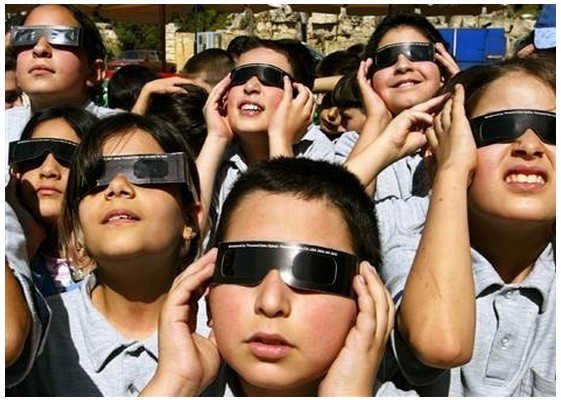
Let’s recall the joy we experienced as children when we used a magnifying glass to burn paper or wood. It was fascinating to see how quickly the focused sunlight could ignite objects. However, it is important to note that this intense heat can be dangerous and harmful to our bodies, especially our eyes. Therefore, it is wise to use a telescope instead of a magnifying glass for observing the sun.
Important precautions:
- Do not aim optical devices at the Sun unless they are specifically designed for solar observation!
- Avoid prolonged direct exposure of your eyes to the Sun without protection.
- Sunglasses should not be used for observing the Sun as they are ineffective and unsafe.
- Using smoked, tinted, or welding glasses to observe the Sun is not recommended. Even though they may reduce the intensity of visible rays, they do not provide sufficient protection against ultraviolet rays that can cause irreversible damage to the retina.
- Using a solar screen for observing the Sun through a telescope is not recommended. Firstly, this method is not very effective and the image contrast is quite low. It is also more difficult to track the object compared to viewing through the eyepiece. Secondly, depending on the telescope’s optics design, these observations can potentially damage the telescope. Some manufacturers may include solar screens, but the heated air inside the tube and the optical components are at risk. This includes secondary or diagonal mirrors, filters, eyepieces, turning systems, and the focuser. Budget eyepieces made of plastic can melt from the intense heat, and lenses housed in metal can burst. In summary, there are no significant advantages to using a solar screen, but there are plenty of problems and potential consequences.
Solar filter
Typically, when an experienced amateur astronomer or observer thinks of a “solar telescope”, they envision a complex and costly instrument designed for observing the solar corona and prominences. These telescopes are capable of isolating narrow spectral lines of hydrogen and effectively filtering out the “white” light, enabling observers to witness the dynamic activity of our daytime star.
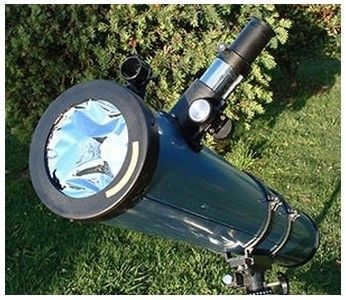
An affordable and uncommon tool for amateur astronomers is a solar telescope specifically designed for narrow-band observations of the Sun. However, it is more practical and cost-effective to modify a regular telescope for solar observations by using a specialized aperture filter. With this setup, we can only observe the photosphere, which includes the Sun’s granulation structure and sunspots. Nonetheless, even this limited view can provide a significant amount of interest and valuable information.
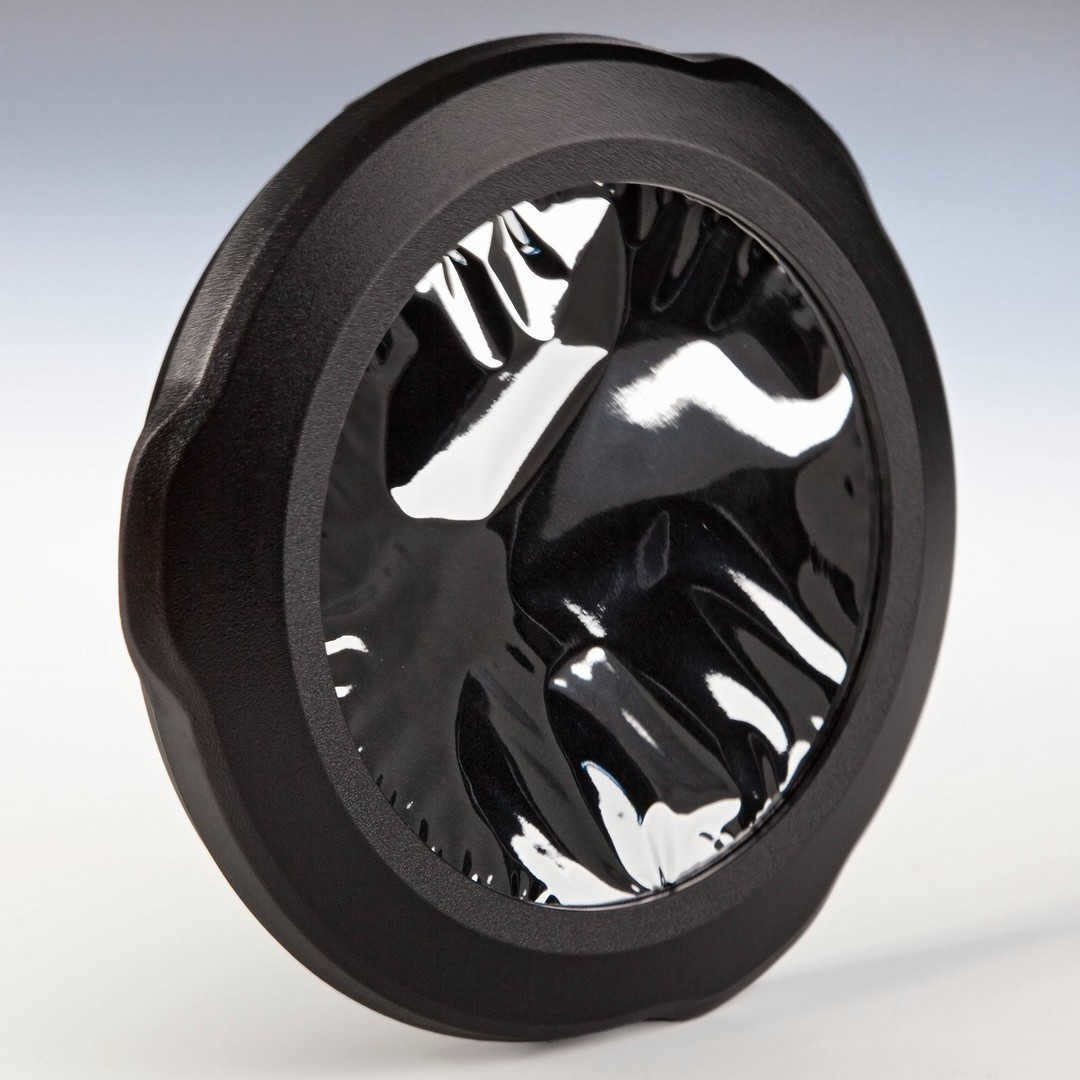
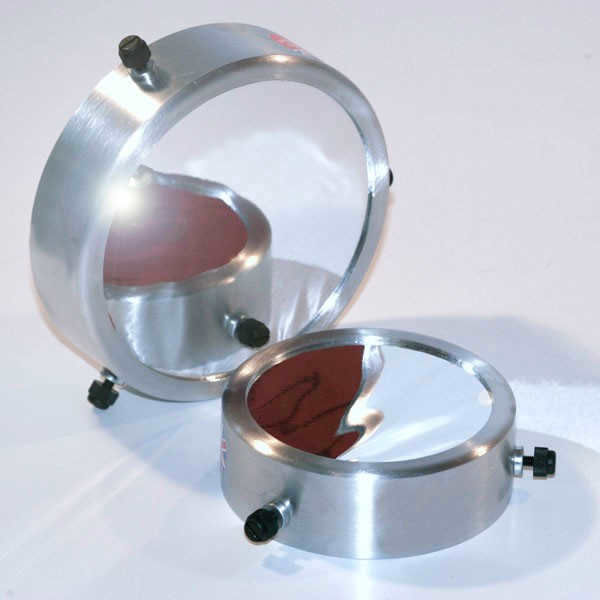
The solar telescope incorporates an aperture filter, which is typically constructed using either a specialized optical film or a plane-parallel glass disk. In either case, the surface of the filter is coated with a reflective material that selectively permits only a small percentage of visible light to pass through. This serves to effectively eliminate any potential adverse effects associated with observing the Sun. By restricting the amount of light entering the telescope to just a few percent, the internal components and optics remain cool, ensuring that the experience of observing the Sun is comparable to viewing other celestial bodies such as the moon or terrestrial objects.
Pre-made Solar Filter
Manufacturers create pre-made filters specifically for the most popular telescope models. These filters typically consist of a plastic frame that resembles the edge of the telescope’s tube cover. Inside the frame, there is a special optical film that allows for safe solar observations. By replacing the telescope’s cover with this filter, you can easily and safely explore the wonders of the sun. Remember, the filter itself is your only, albeit highly reliable, protection against the sun’s rays.
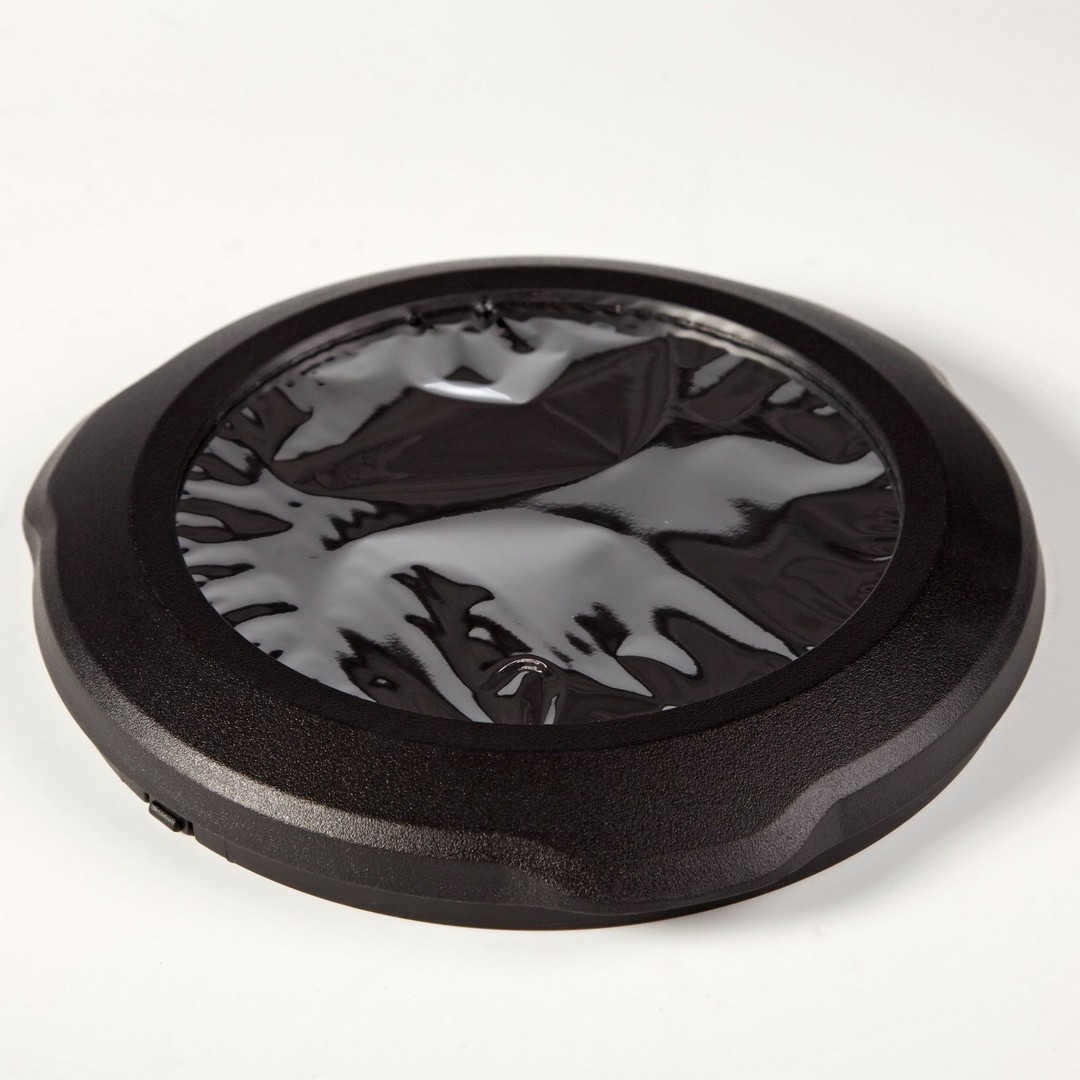
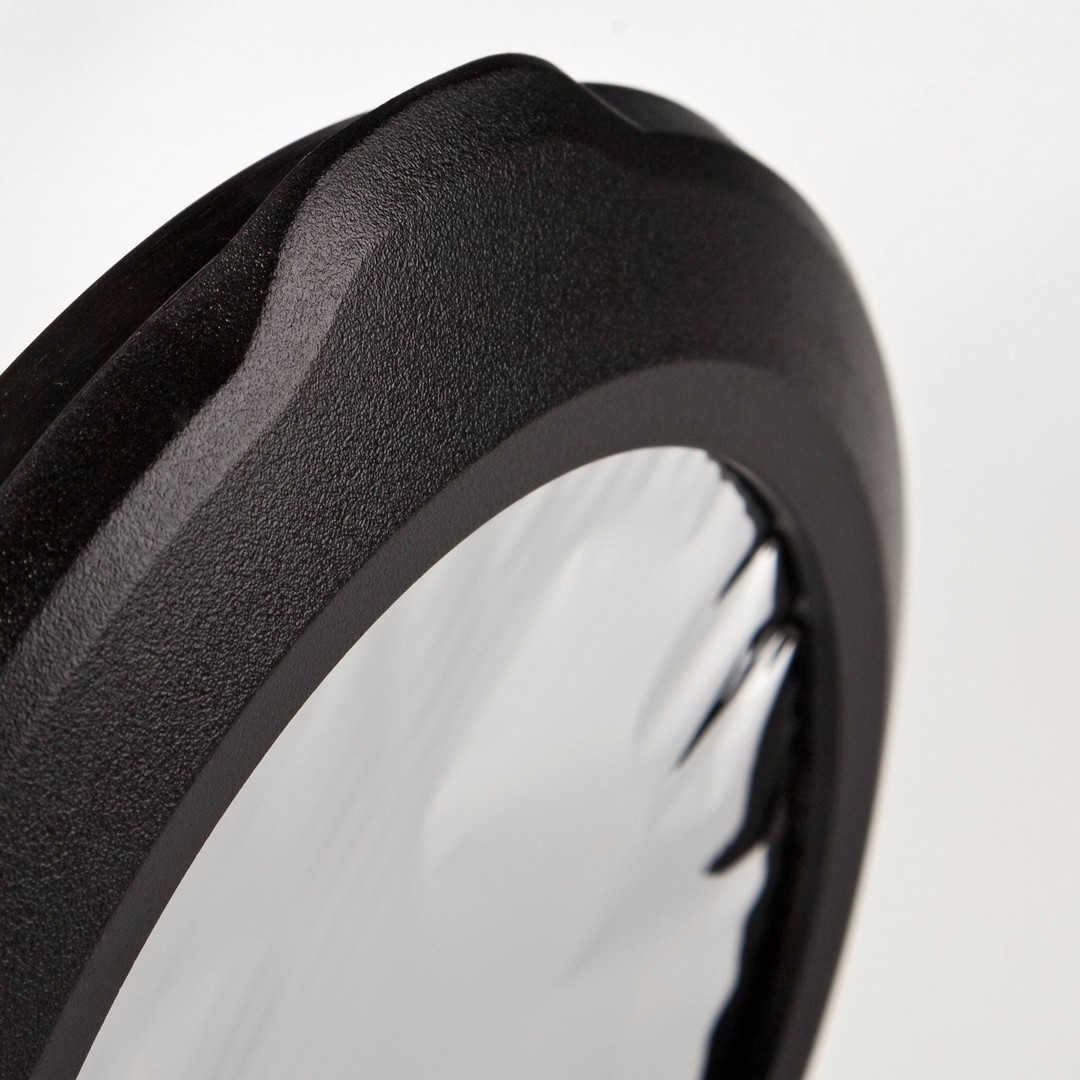
As such, it is crucial to approach the installation of the telescope with utmost care. Prior to aligning the telescope, it is essential to ensure that the filter is firmly attached and there is no possibility of it being ripped off by a sudden gust of wind or inadvertent contact. When observing in the presence of children, it is advisable to secure the filter frame to the tube using a couple of strips of tape, regardless of how snugly it fits on the tube.
Remember to keep the finder in mind!
It’s important to remember that the optical finder attached to the telescope is essentially a small telescope itself. As a result, it also poses some risks to the eyes and its optics can overheat. Therefore, it’s advisable to take precautions such as using small filters for the finder or avoiding its use altogether. It is possible to aim at the Sun without using a spotting scope successfully.
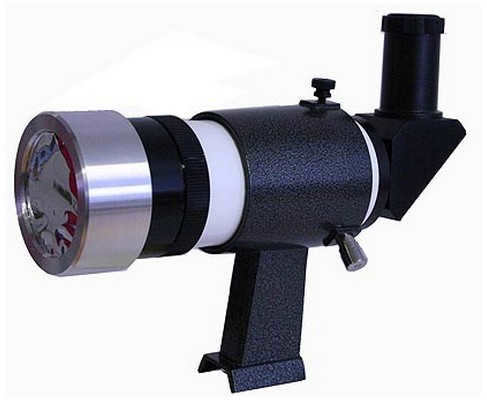
Once you have positioned the filter and eyepiece with the lowest magnification, aim the telescope tube roughly towards the Sun. Take a step back and observe the shadow that the telescope creates on the ground. Fine-tune the positioning of the tube until the shadow becomes as small and perfectly circular as possible; this ensures that the Sun’s rays pass through the tube in parallel with its walls.
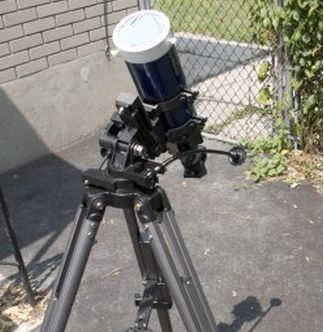
If you take a peek through the eyepiece right now and glance around the field of vision, you’ll certainly spot the glowing orb of our beloved star. Let’s adjust the focus on the eyepiece and venture forth on our quest to unravel the enigmas of the Sun!

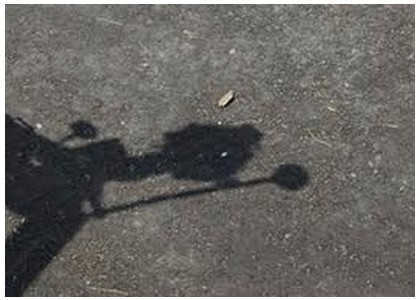
Creating a DIY Solar Filter
It is not uncommon for a telescope with a unique diameter to not have a compatible ready-made solar filter available or for one that is suitable to be expensive or difficult to find. However, this does not deter individuals who enjoy and have the skills to create things on their own. In such cases, they can make their own solar filter. To do this, they can use simple sheets of AstroSolar film from the renowned German company, Baader Planetarium.
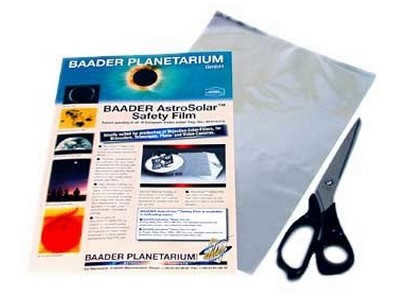
The initial step involves purchasing the solar film. There is a distinct advantage in the fact that the film sheets have a consistent rectangular shape, meaning that there will be enough for not only the telescope, but also for the finder, and possibly for binoculars or homemade glasses for observing the Sun. Afterward, it is crucial to locate a suitable material for creating the filter frame. Typically, dense cardboard or soft office and always opaque plastic are utilized for this purpose. It is also feasible to carve the filter frame from thin plywood, sheet metal, or textolite.
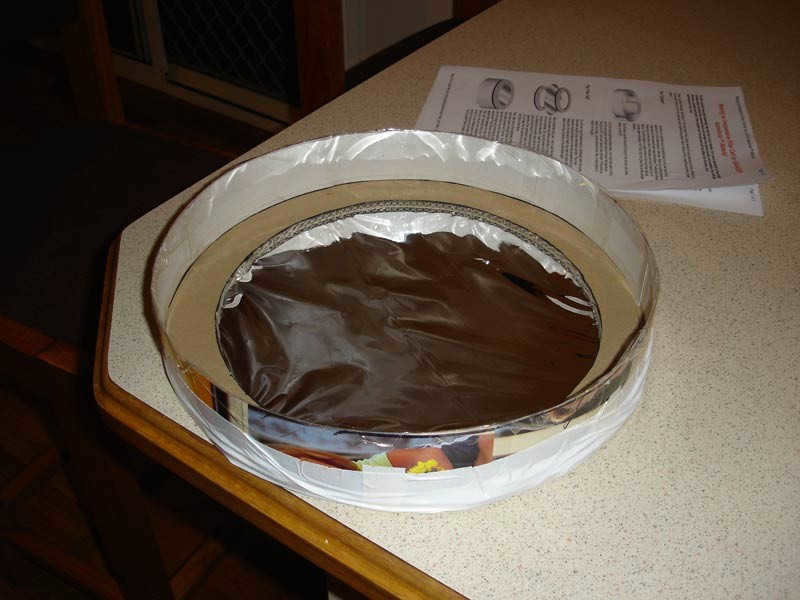
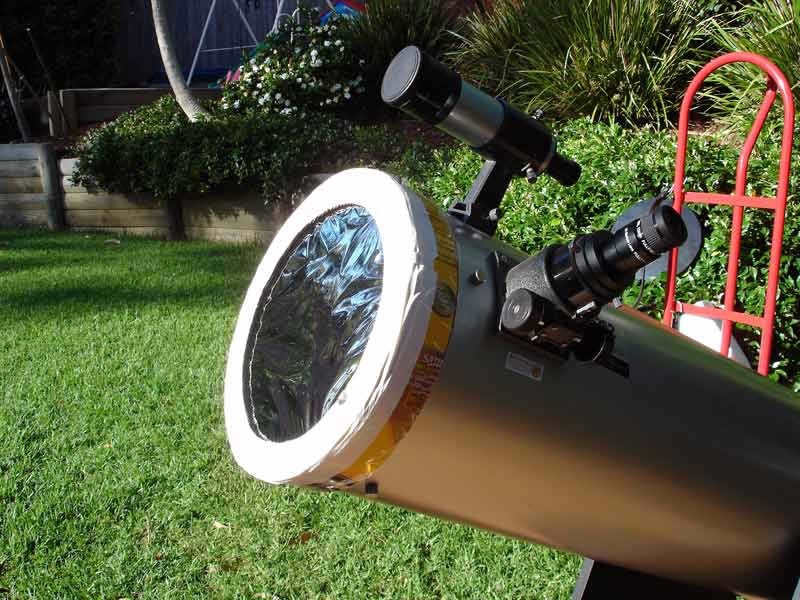
There are many different designs available for the frame. For example, a simple cap can be used on the pipe, which can often be found in households in the form of a plastic cap that fits the diameter of the pipe. Another option is a ring-shaped frame that can be tightly inserted into the pipe or another structure. The film in the frame should be slightly stretched, but not too much to avoid tearing, as this will ensure better picture quality. It is important to note that a wavy or sagging film is not ideal, but it is not a critical issue. Fixing the filter securely is crucial, as it needs to be protected from children’s games or accidental gusts of wind. Always remember that the observer’s vision is at stake when the filter is removed from the tube!
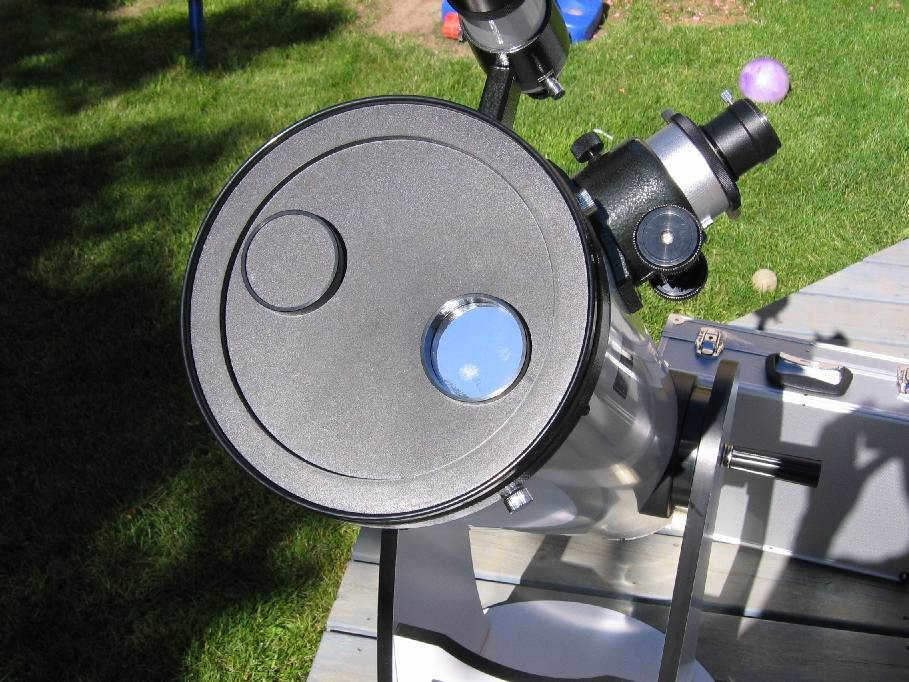
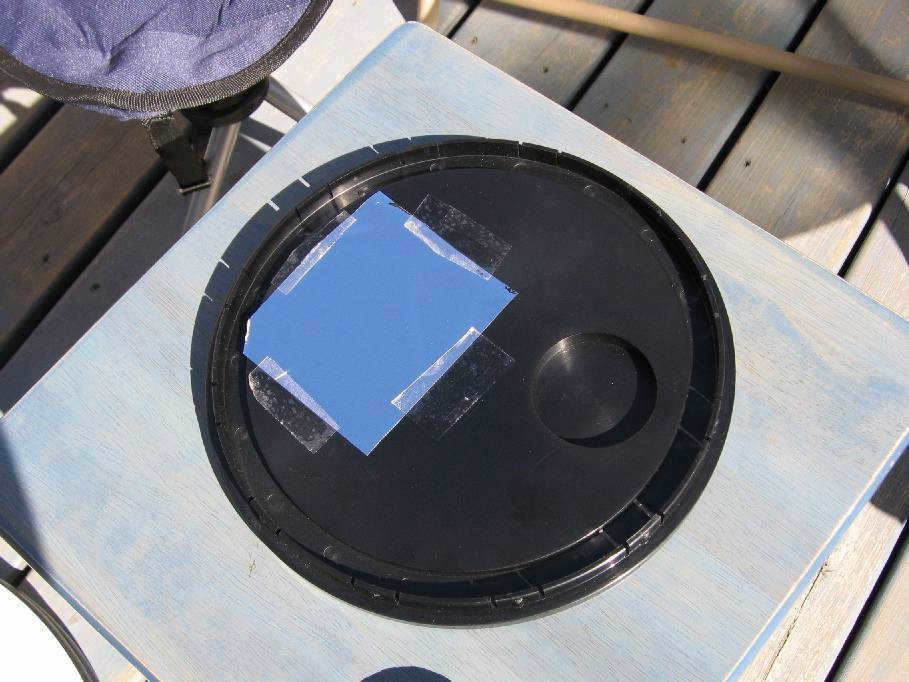
Instead of using a full-aperture filter, individuals with Newton or refractor telescopes can opt to utilize only a portion of the aperture. Many modern telescopes come equipped with a small diameter cover on the tube. Underneath this cover, one can simply affix a small rectangular piece of solar film. This provides a quick and elegant solution for obtaining a solar filter. Naturally, sacrificing a portion of the aperture is necessary, but this is not a major concern. During the daytime, due to strong air turbulence, the resolution of details significantly decreases. As proven through practice, attempting to utilize an aperture larger than 100-120mm is pointless, as the atmosphere cannot achieve the calculated resolution even during moments of relative calm.
Fascinating Phenomena
The Sun, much like its celestial counterparts, is teeming with enigmas. Its essence is both awe-inspiring and enigmatic, and unraveling the secrets buried within its core holds the promise of significant scientific and technological advancements in the realms of energy and nuclear physics. This is of particular interest to amateur astronomers, as observing the Sun is both convenient and relatively uncomplicated. Capturing photographs of the ever-changing and dynamic groups of sunspots is a captivating pursuit, and monitoring their transformations over time adds an extra layer of intrigue to the process.
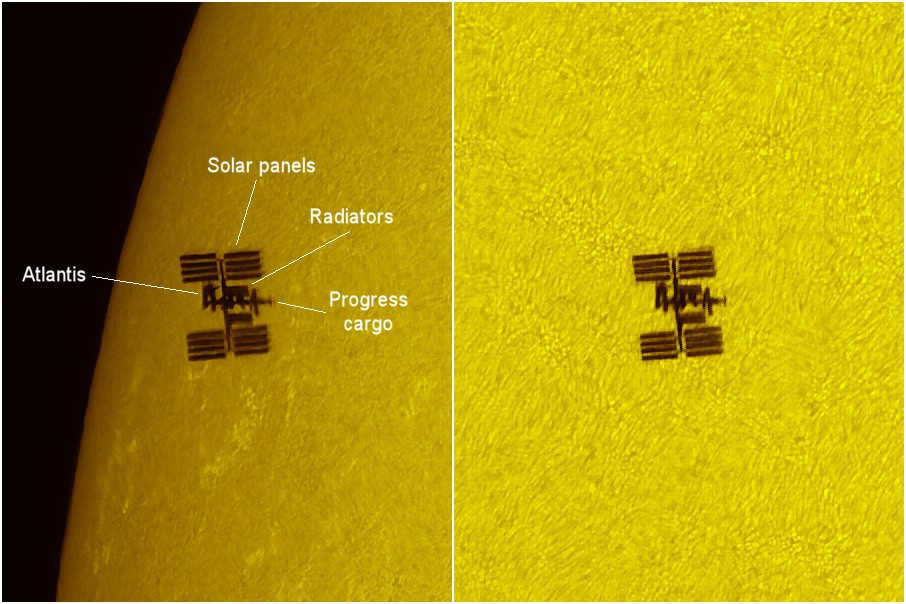
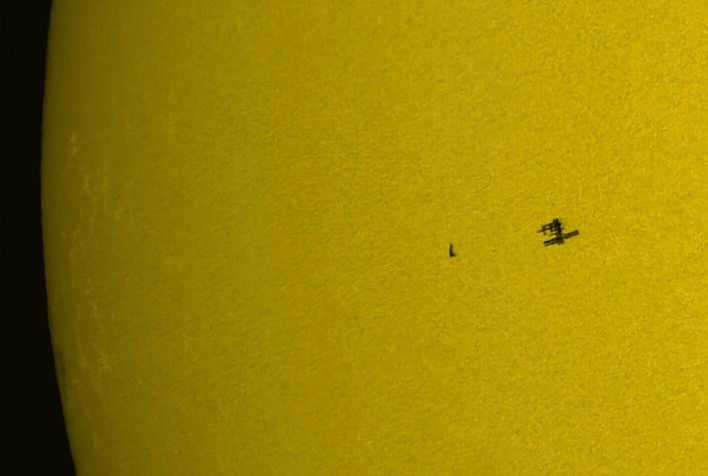
Aside from the Sun itself, there are many other fascinating phenomena that can be observed. For instance, one can witness the International Space Station (ISS) or an airplane passing across the Sun’s surface. If you manage to capture this moment by pressing the camera’s shutter button while it is attached to the telescope, you might obtain an intriguing and extraordinary photograph. Even more captivating is the opportunity to observe the planets Venus or Mercury transiting the Sun’s disk. These two planets, being within Earth’s orbit, provide us with the chance to witness such remarkable and rare occurrences.

However, undoubtedly, the ultimate occurrence for any spectator of our star that shines during the day is a complete solar eclipse. This extraordinary event captivated the intellects of our predecessors and continues to profoundly impact the perspectives of those fortunate enough to witness it. The Moon’s disk appears in the sky to be the same size as the Sun’s disk, both in terms of angular measurement. Whether this alignment is a coincidence or a deliberate act by a higher power, perhaps science will never truly ascertain.
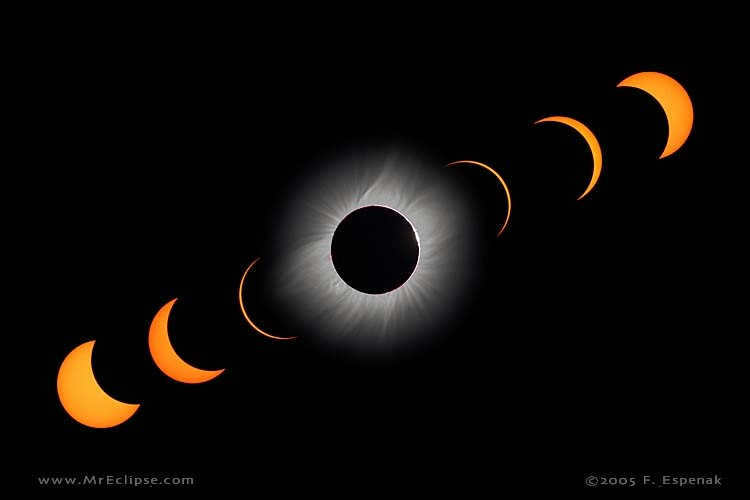
However, due to this incredible coincidence, people on Earth have the opportunity to witness such a breathtaking event. The Moon’s famous diamond ring appears as it covers almost the entire disk of light, and then slowly fades away. After that, the stunning solar corona, which is normally hidden from our view during the day due to the scattering of light in the Earth’s atmosphere, becomes visible. The sight of it is truly awe-inspiring and it is no wonder that many enthusiasts travel all around the globe in search of this rare phenomenon.
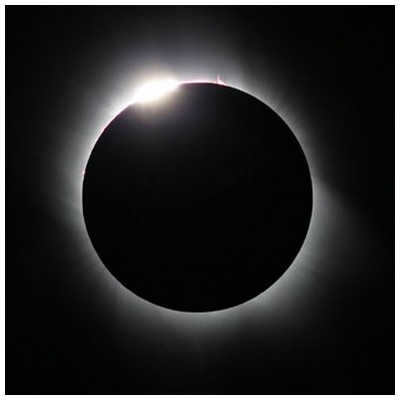
In our store’s “Solar Filters” section, you have the opportunity to purchase solar filters and solar films to create your own.
Interestingly enough, there have been numerous articles about astronomy on Hubra/Geektimes, but very few about observing our brilliant celestial body. Let’s fill this void and explore the methods of observing the Sun. As you may already know, it is possible to observe the Sun through a telescope using both the left and right eye.
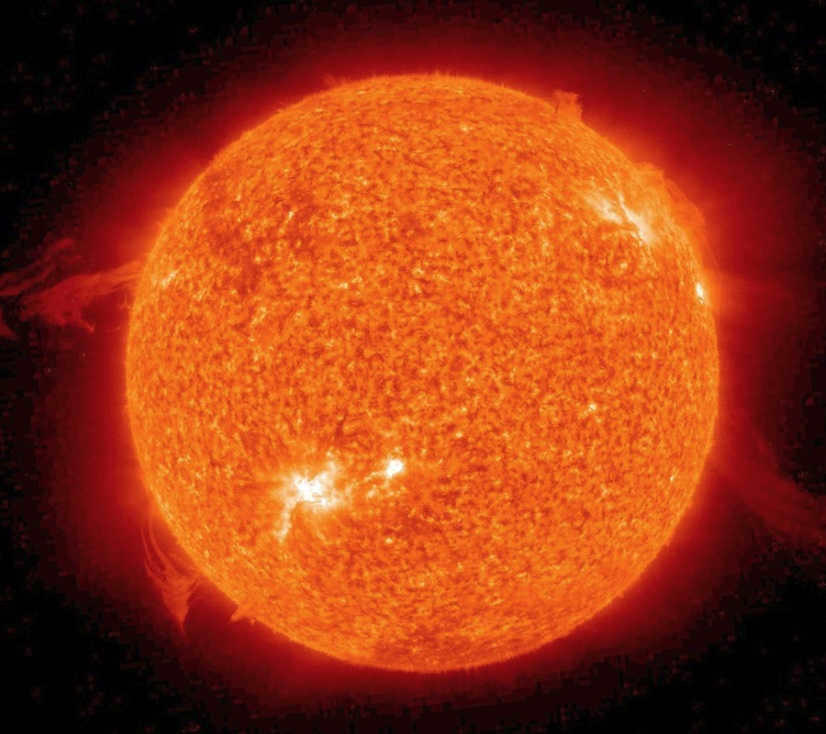
Now, let us explore a fascinating and secure way to observe the sun.
1. Utilize a Projection Screen
This technique was introduced to me during my youth, and I personally experimented with it by employing a pair of eyeglass tubes.

The technique is only applicable to tubes with a small diameter and cannot be used with mirror telescopes due to the risk of overheating the inner mirror. However, if you have a small refractor and want to demonstrate a solar eclipse or the transit of Venus across the Sun’s disk to those around you, this method works well. For added convenience, you can consider purchasing a dedicated projection screen from Geoptik.

2. Baader Planetarium Astrosolar film
An economical and accessible option for observers, providing reasonably good quality. A film resembling foil can be purchased for approximately $30-50.
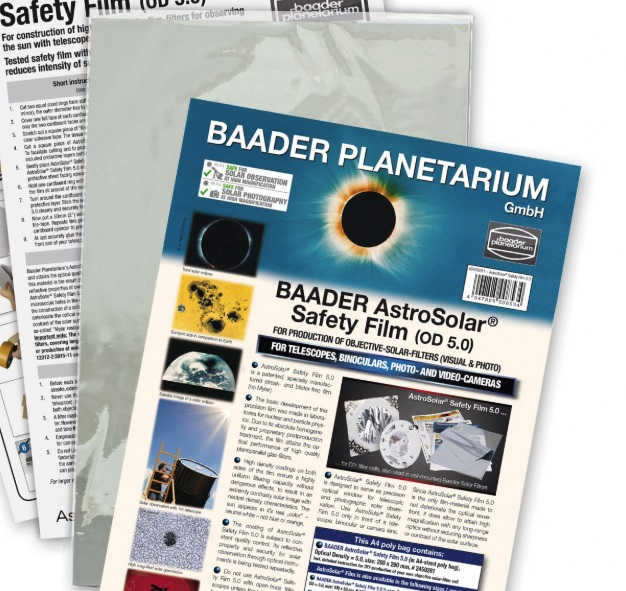
It is possible to customize it to any dimension, and you have the ability to fabricate connectors for any device, ranging from a mobile phone to a theater binoculars or even a 10″ Dobsonian telescope. It could have a similar appearance to this:
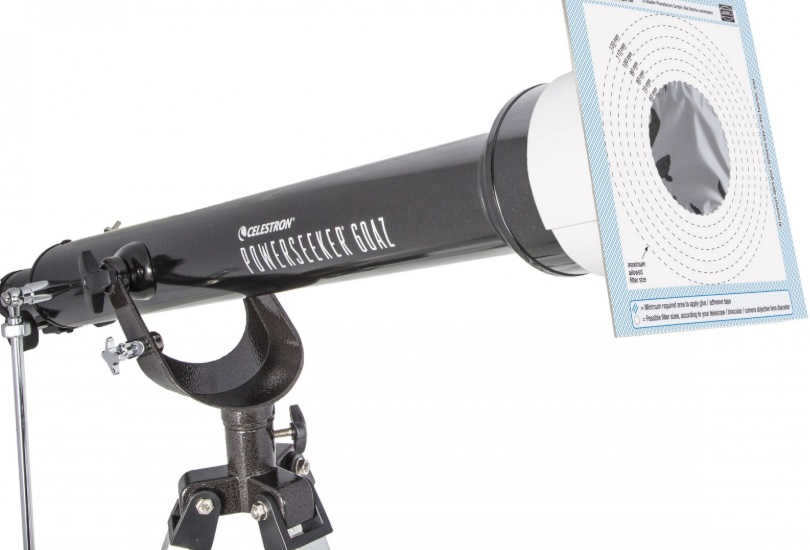
Here is an example of the picture you can obtain:
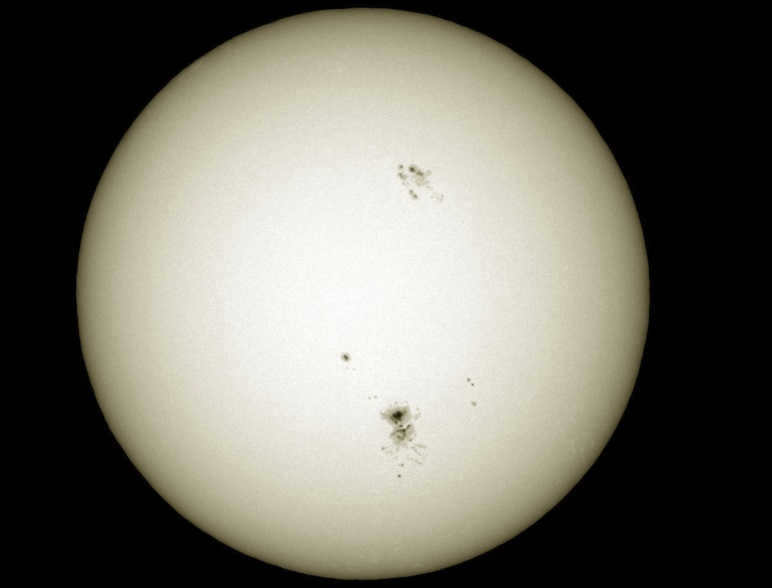
The actual level of magnification will vary depending on the specific instrument, its aperture, and magnification capabilities. It is important to note that the film does not have the ability to magnify the image.
Inexpensive pre-made filters, along with their housing, can be purchased in China for just a few dollars. Such a set can be quite useful, particularly when used with binoculars.
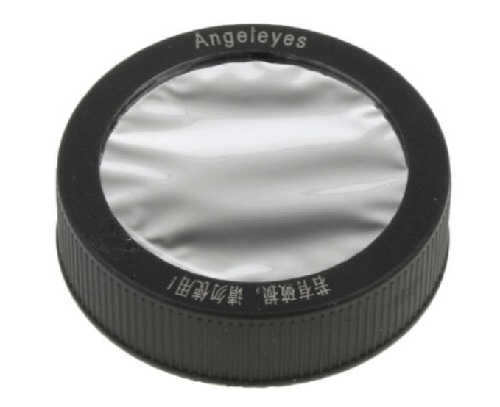
3. Glass filter
Actually, the technique is quite similar to the previous one, but it doesn’t require a “kolkhoz” (which can be seen as both an advantage and a disadvantage), and provides slightly better image quality. Naturally, the cost is also higher, ranging from $30 to $200, depending on the diameter and brand.
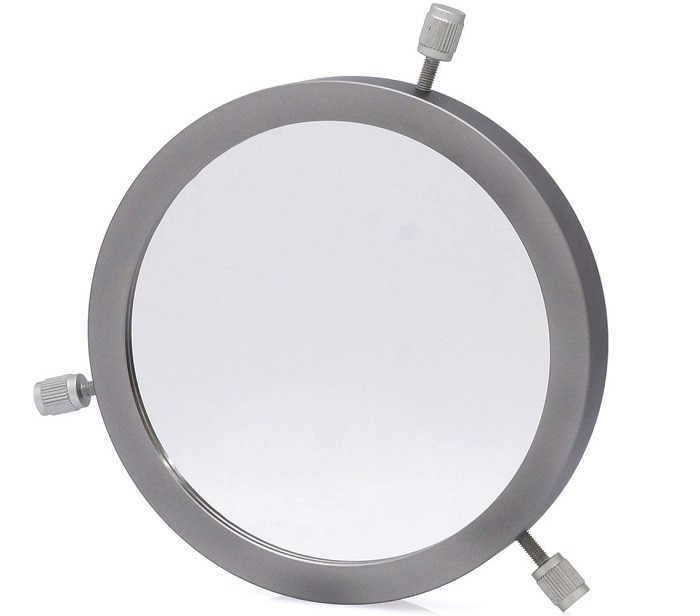
From the image, it is clear that this filter must already be chosen for a specific pipe diameter.
Let’s continue. If we desire to observe even more intricate details, we require a specific narrow-band filter. This filter permits only a limited range of light to pass through and, incidentally, is the priciest component of a dedicated solar telescope. Let’s examine the available models on the market.
4. Coronado PST telescopes.
PST is an acronym for Personal Solar Telescope, although it could be more accurately described as a telescope within a telescope.
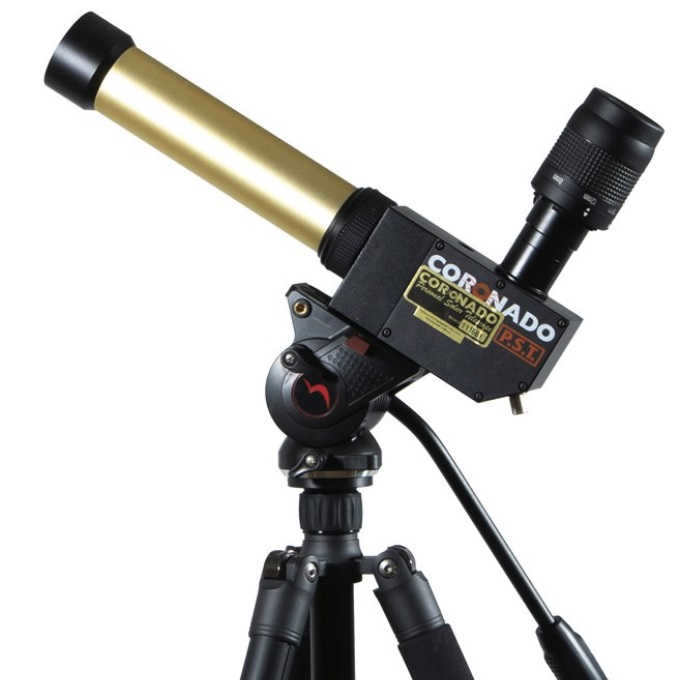
The PST has a focal length of only 400mm and an aperture of 40mm, so don’t expect high levels of magnification. The kit includes an 18mm eyepiece, which provides a magnification of just 22x. However, it’s possible to change eyepieces, so if you have others, you can adjust the magnification accordingly. The optimal range is up to 8mm, which will give you a magnification of 50x.
However, the main advantage of the Coronado is its narrow band H-a filter, which allows you to observe more details on the surface of the Sun and see solar prominences.
In reality, of course, you won’t see as much detail as in the photo below, but it will give you a rough idea of what you can see on the Sun through the H-a filter:
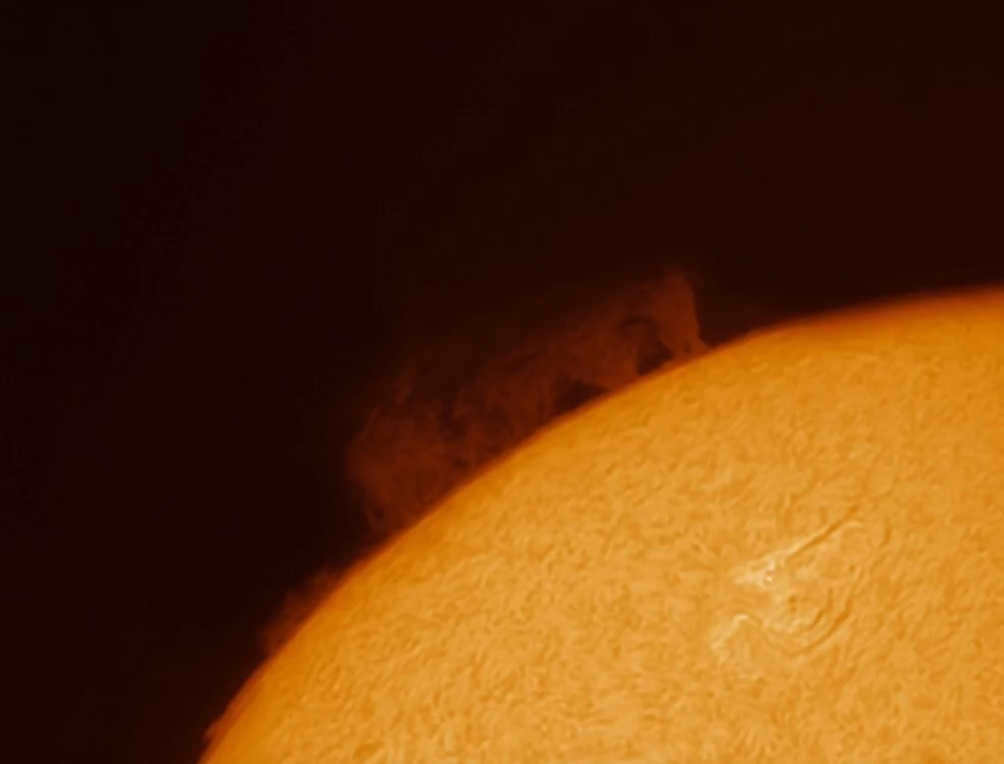
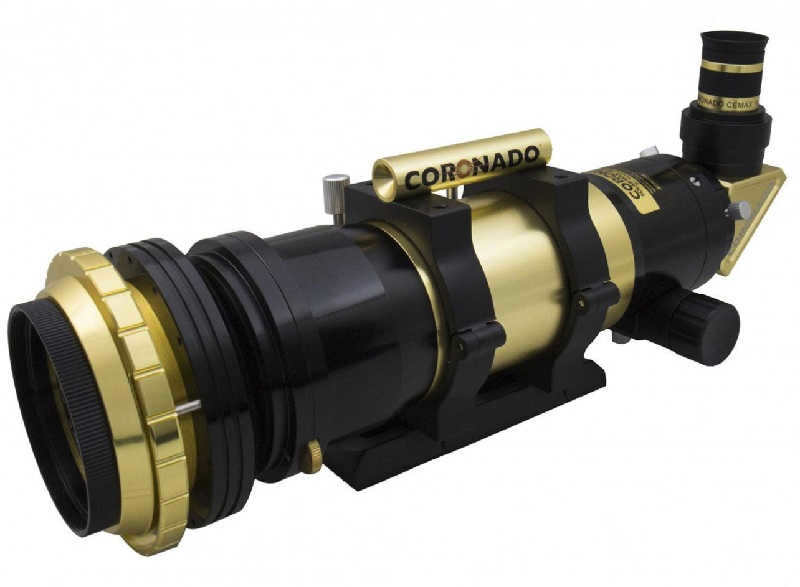
Undoubtedly, PST serves as a basic tool for solar observations in H-a. Undeniably, a 40mm aperture is rather small. Nonetheless, narrowband filters come with a hefty price tag. Just to illustrate, a 70mm telescope of similar quality costs a staggering 3,000 euros:
Alternatively, Lunt telescopes offer a compelling option as they provide higher magnification than PST at a slightly lower cost. Some enthusiasts opt to pair Coronado filters with a standard refractor, resulting in a larger aperture at a more affordable price. You can find an example of such a conversion here.
5. H-a filters that can be swapped between telescopes
If you’re looking for the flexibility to use different telescopes without being limited to a specific model, consider investing in an interchangeable H-a filter. One option to consider is the Daystar Quark, which can be easily replaced and used with various telescopes.
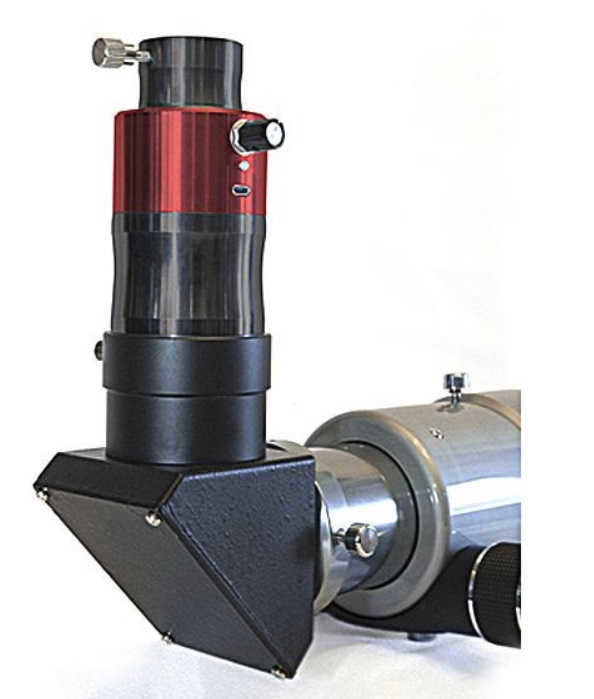
This particular filter, priced at 1350 Euros, can be attached to an existing refractor telescope, effectively transforming it into a solar telescope. It’s worth noting that there are separate filters available for observing different wavelengths of the sun, such as the solar surface (Chromosphere) and prominences. Each filter is priced at 1350 Euros. And yes, you read that right – there’s even an option to add a third filter specifically for calcium lines, also priced at 1350 Euros.
With the use of these filters, you can enjoy the opportunity to observe or photograph the sun with comparable quality.
While the upper price limit for various telescopes knows no bounds, there are Research Grade filters available in the range of 10-15 kilo euros. It’s possible that there are even more expensive options out there, but they may not be commonly listed in regular price catalogs.
Summary
Studying the Sun is a fascinating activity, unlike the Moon which remains unchanged for thousands of years. The Sun’s surface and structure are constantly evolving, making it an exciting subject of observation. Although it may not be cheap, the cost of a budget solar telescope is comparable to that of an iPhone, making it a feasible investment. Moreover, the enjoyment derived from this process is likely to surpass the novelty of other activities, such as Yablodevisa. In the following section, you will find several reviews in English discussing various models of solar telescopes.
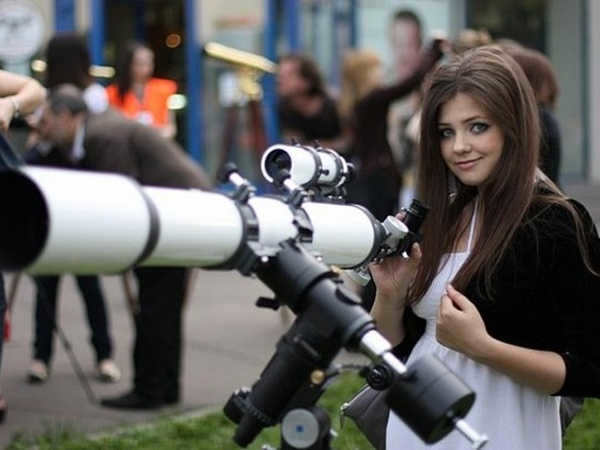
From our earliest years, we have been cautioned against the dangers of observing the Sun with binoculars or a telescope – it is said that doing so will result in harm to our eyes. We all understand the reasons behind this warning – the intense rays of the Sun can cause irreparable damage to the delicate tissues of our eyes. But what exactly would this damage entail? It’s a somewhat childlike question, but one that piques our curiosity nonetheless.
Intrigued by this question, astronomer Mark Thompson decided to conduct an experiment to find out. He set up an 80mm telescope with a magnification of 50x, directed it towards the Sun, and peered through the telescope. However, rather than subjecting his own eyes to potential harm, he opted to observe the Sun’s magnificence through the eye of a pig.
The structure of the pig’s eye closely resembles that of the human eye, making it an ideal organ for studying the effects of unprotected observation of the Sun. When one gazes at the Sun without any form of eye protection, initially it may seem harmless. However, after approximately 20 seconds, the eye begins to emit smoke, indicating that the eye tissues are being burned rather than producing vapor.
Within this brief duration, the cornea and lens of the eye develop a hole, as discovered by Thompson during his dissection of the eye. The extent of damage caused by the radiation is remarkably severe, affecting not only the surface but also the deeper layers of the eyeball.
Based on these findings, the scientist concludes that it is an extremely ill-advised decision to observe the Sun through a telescope with the naked eye. Thompson emphasizes the importance of eye protection when engaging in such activities. However, it is safe to say that this cautionary advice does not come as a surprise to most of us.
It brings to mind an experiment conducted by a scientist in the past. The scientist’s objective was to determine the velocity of electric current, so he applied a shock to a connected group of monks using a rudimentary capacitor. As a result, they collectively emitted a simultaneous scream. Consequently, the scientist discovered the astonishing speed at which electricity travels.
“Observing the sun directly through a telescope without any protective eyewear.” Such an exceptional expression.
“He instructed his son, Tommy, to gaze at the sun for as long as he could endure. Initially, there appeared to be no immediate effects, but after a span of 20 minutes, his eye began to emit smoke. Remarkably, this was not a mere vapor but rather a sign that the eye tissues were igniting. The agonizing screams persisted for a mere 10 minutes until Tommy grew weary.
Within a mere 20 seconds, a cavity had formed within the eye, penetrating through the cornea and lens. Upon dissecting the eye, Thompson discovered that the extent of the damage was exceedingly severe, as the radiation had not only impacted the surface but also penetrated into the deep layers of the eyeball.”
As a matter of fact, it is possible to observe the sun through a telescope, but caution must be exercised with each eye viewing separately.
I am acquainted with an individual who experienced retinal burns of approximately 20 degrees (the size of the Sun in the eyepiece) while observing through a telescope. Consequently, he now perceives a black spot in that specific area; however, he claims that it does not impede his vision.
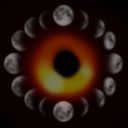
The outer layer of the Sun
This footage was captured using the X-ray telescope aboard the Hinode satellite.

My most stunning photograph of the Sun!
This extraordinary image is captured in a whopping 18MB jpeg format and the source file is a massive 412GB in size. It boasts an impressive resolution of 7000×7000 pixels.
In the event that the website’s engine compresses the link to the file, you can access it directly at https://t.me/kulachatov/1234.
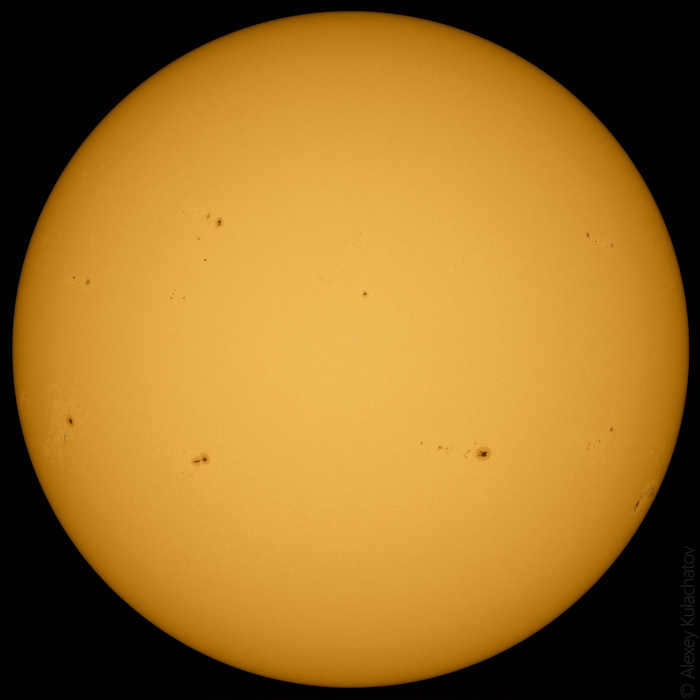
It was a sort of experiment with my brand new Svbony MK105 telescope. I decided to try it out as a replacement for my previous SW MAK 102 telescope, which I used specifically for capturing close-up shots of the Moon and the Sun in a single frame, without needing to stitch together multiple images.
Debunking Common Misconceptions About Sunscreens

According to experts, sunscreen is an essential skincare product for everyone. However, there are numerous misunderstandings regarding its usage. We have taken it upon ourselves to investigate the most prevalent ones.
A number of travel websites recommend the use of SPF (sun protection factor) products for sun protection. This advice can be found on beauty portals, news sites, and entertainment websites. In online forums, users are engaging in discussions about the effectiveness of SPF products in preventing sunburn and the harmful effects of the sun.
While basking in the sunshine on the sandy shore, the human epidermis is exposed to ultraviolet radiation. Ultraviolet A (UVA) and ultraviolet B (UVB) rays have the potential to impact human well-being. There is also ultraviolet C (UVC), however, it is effectively blocked by the Earth’s ozone layer and does not reach the planet’s surface. UVA rays have a more pronounced effect on premature skin aging and the development of a golden tan, while UVB rays contribute to skin redness and sunburn. Nevertheless, both types of radiation pose a danger to one’s health, increasing the risk of skin cancer, eye ailments, and more. “Checked” has previously discussed the reasons why tanning is detrimental to one’s well-being.
SPF is responsible solely for shielding against type B rays, but does not fend off type A (meaning it prevents burns but not tanning). UVB rays constitute only 5% of the ultraviolet radiation reaching Earth’s surface, with the remainder being UVA. To ensure the product guards against type A rays as well, one should seek out “broad spectrum protection” on the label, the acronym PPD, or a statement indicating effectiveness against UVA rays. Certain Asian sunscreen manufacturers designate their UVA-protective products with the abbreviation PA+ (with an increasing number of plus signs indicating higher protection levels).
While products with a high SPF effectively shield the skin from the sun, it’s important to note that they don’t provide complete protection against all forms of solar radiation. Therefore, when selecting a sunscreen, it’s crucial to consider its capacity to guard against type A rays as well.

Our conclusion: partially correct

Dispelling the myth about SPF level and effectiveness against UV rays
Many cosmetic brands offer products that claim to have SPF 80 or even SPF 100 protection factors. Some of these brands suggest that if you apply their product with a lower SPF in multiple layers, you can achieve the same level of protection. These products are often recommended for individuals with very fair skin on the websites of online cosmetics stores.
While a higher SPF does offer more effective sun protection, it is important to note that this is only the case when using products with a protection factor of up to SPF 50. The Environmental Working Group, a well-known public organization, advises against using products with an SPF above 50. Their experts argue that these high SPF products can lead to a false sense of security, causing individuals to spend more time in the sun than they should. Additionally, these products often contain a high concentration of chemicals that may pose potential health risks. Furthermore, the difference in protection between products with an SPF of 50 and those with an SPF of 100 is relatively minimal. For instance, the former offers 98% protection against UVB radiation, while the latter provides 99% protection. It is worth noting that neither of these products offer protection against UVA radiation unless specifically labeled as such. These findings are supported by experts from the Skin Cancer Foundation.
So, if you want to sunbathe on the beach or go for long walks in the bright sun, it is important to select products with a high level of protection. However, this applies only to products with a protection factor of SPF 50 or lower. Products with higher protection factors are often just a marketing gimmick.

Our conclusion: Partially accurate statements

There is no need to use sunscreen in overcast weather
People on the internet are sharing storiesof getting sunburned on cloudy days, believingthat protecting themselves from the sun was unnecessary.. On Q&A platforms, individuals are questioningwhether it’s possible to get a tan on a cloudy day.
If you want to know if you need to use a specific cream, you can check the UV index of your skin. This information is available on various weather forecast apps on popular smartphones, as well as on dedicated websites. According to the World Health Organization, it is recommended to apply sun protection before going outside if the UV index is 3 or above.

If your skin is dark or already tanned, you don’t require sun protection
Online users often express their viewpoint that individuals with darker skin tones do not require sunscreen, as seen in the comments section of articles on this subject. Some mention how they would spend entire days in the sun during their childhood without any protection and, due to their naturally dark complexion, never experienced sunburn. On various forums, a similar rationale is given, recommending the use of products with a lower sun protection factor (e.g. SPF 6) towards the end of a holiday.
While it is true that individuals with darker skin are less prone to sunburn, this does not mean that they are fully protected from the harmful effects of UV light. Even the darkest skin tones offer a level of protection equivalent to SPF 13, which may not be sufficient in many cases. Dermatologists recommend using sunscreen with at least SPF 30, even for those with naturally dark skin.
Experts from the Skin Cancer Foundation emphasize that dark-skinned individuals are still at risk for developing skin cancer, as sun exposure is one of the contributing factors. Furthermore, prolonged exposure to sunlight can accelerate premature aging, affecting individuals with dark skin just as it does those with lighter skin tones.
In general, experts agree that even individuals with dark skin should use sunscreen, as their natural melanin alone is not enough to provide adequate protection. This is especially true for those with naturally dark skin or a light tan.

After conducting thorough research, we have determined that the majority of the claims made in relation to sunscreen are not entirely accurate.

Sunscreens pose a risk to your well-being
Various media sources have raised concerns about the potential dangers of sunscreens, including “Izvestia,” “Science and Life,” the BBC, and others. Information suggesting that sunscreens may have more negative effects than positive ones can be found on the websites of pharmacies and cosmetic stores. On parenting forums, there is ongoing discussion among parents about whether the sun itself or the use of sunscreen is more detrimental to a child’s health.
In 2019, the U.S. Food and Drug Administration (FDA) released findings from studies conducted on four popular sunscreens in the United States. Researchers discovered that certain components (avobenzone, oxybenzone, octocrylene, and ecamsul) in these cosmetics are indeed absorbed into the bloodstream, potentially having negative effects on human health. It is important to note, however, that the study involved a limited sample size of only 24 volunteers. Therefore, the FDA experts emphasize that these results should not be used as a reason to completely avoid using sunscreen products.
Simultaneously, the FDA issued a press release stating that out of the 16 most commonly used active ingredients in sunscreens, only two can be considered definitively safe: zinc oxide and titanium dioxide. The agency does not claim that the remaining substances are inherently dangerous, but further research is needed to better understand their potential impact on the body.
The Environmental Working Group asserts that certain ingredients found in sunscreens can pose a risk to health, potentially causing hormonal disruptions, allergic reactions, and other issues. Additionally, the substances deemed safe by the FDA may be carcinogenic if inhaled, a possibility when using spray sunscreens.
It is important to note, however, that this does not mean that all sunscreens are inherently harmful. Further research is necessary to determine the true extent of the potential dangers associated with certain components. Furthermore, there is evidence to suggest that certain sunscreen ingredients may not harm humans directly, but could have detrimental effects on the environment, such as the destruction of coral reefs.

Our conclusion: it’s still uncertain
There is no spam, advertising, or promotion of anything within the communities (except for common sense)
The audio versions of the audits in the form of podcasts from Kommersant FM can be found on Yandex.Podcasts, Apple Podcasts, LitRes, Soundstream, and Google.Podcasts.


Changes in Weather

A chronological account of the supermassive black hole’s activities in the core of the M87 galaxy over the course of a year
◉ Utilizing the principles of general relativity theory and plasma dynamics, along with data collected from the Event Horizon telescope, these simulations provide a fascinating insight into the behavior of this celestial phenomenon.
Represented by the gray bar, the bright points within the ring display the average location of significant events. Situated approximately 55 million light-years away from our planet, this ring possesses a physical diameter of around 100 billion km.

Solar Eclipse
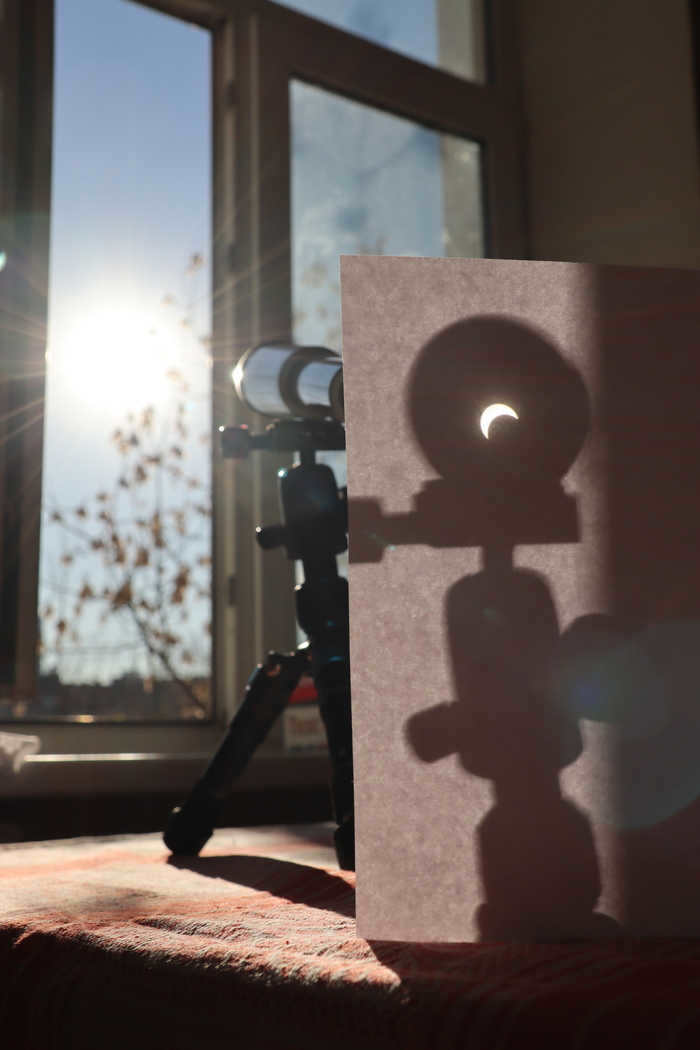
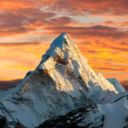
Our star

The director of IKI RAS is confident that DKIST will provide a solution to the enigma of the Sun: why does its corona reach temperatures of up to 1 million degrees Celsius?
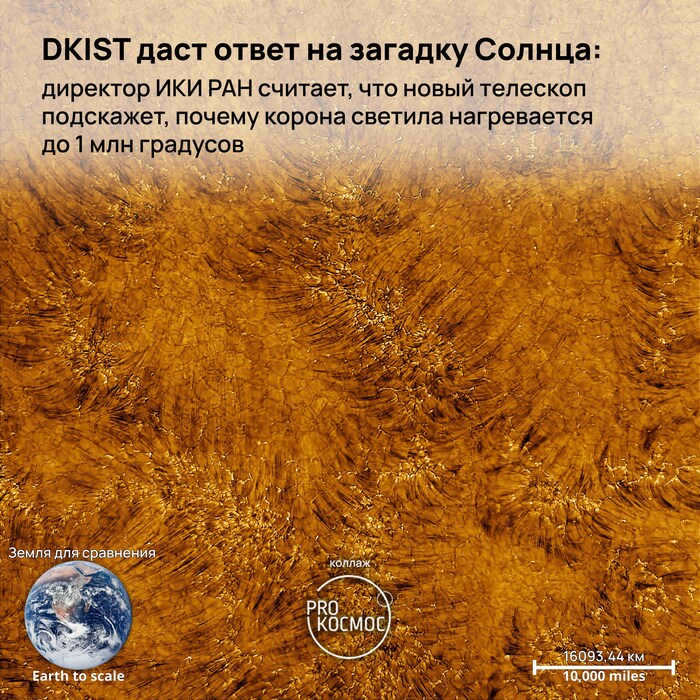

An unprecedented resolution of 18 km/pixel (the Sun’s diameter is 1.4 million km) has allowed scientists to capture the first-ever image of the Sun. The photo showcases a portion of the Sun’s chromosphere (located between the photosphere and the corona) stretching across 82,000 km. This remarkable feat was made possible by the launch of the Daniel K. Inoue Solar Telescope (DKIST) in Hawaii, which is the most powerful ground-based solar telescope to date. In a conversation with Pro Cosmos, the director of IKI RAS shares the potential discoveries that can be made about the star that graces our skies every day.
"In order to capture each and every photon emitted by distant stars, a traditional astronomical telescope in the night sky is constructed on a large scale [currently, there is a 10-meter mirror, with plans to build a 30-meter mirror]. Conversely, a solar telescope must eliminate the majority of solar photons to prevent overheating. This presents a complex technical challenge that limits the current maximum size of solar telescopes," explains Anatoly Petrukovich, Director of IKI RAS, when discussing the unique nature of DKIST.
Thanks to the DKIST telescope, we are able to observe the surface of the star in great detail, including the granulation of the convective flows in the solar photosphere and chromosphere. These processes play a crucial role in the transfer of energy from the Sun’s core to its surface, where it is then radiated into space.
Unveiling the Secret of the Sun
Another fascinating aspect, as pointed out by Anatoly Petrukovich, are the dark zones that exist between these granules, occasionally revealing bright dots. It is believed that these zones hold the key to one of the Sun’s greatest mysteries – why a corona with a temperature of over a million Kelvin forms above a photosphere with a temperature of only 6000 degrees Kelvin?
"Up until now, the mystery behind heating the corona to a temperature of one million Kelvin remains unsolved. The impact of large-scale events on the sun’s surface, such as solar flares, is clearly inadequate. One popular theory suggests that "nano-flares" – small bursts of energy release that occur precisely at the intersections of granules on the sun’s surface – are responsible for heating the corona. However, the inability to observe and study these phenomena persists due to insufficient optical resolution. Hopefully, the new telescope will provide an answer to this crucial question, offering a better understanding of the organization of not only the sun but also other stars"– commented the director of the Institute of Space Research of the Russian Academy of Sciences.
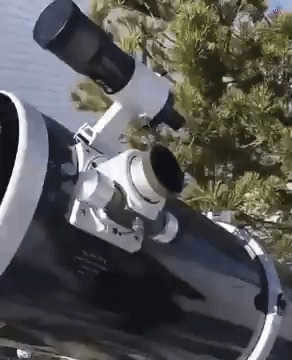

When I was around 20 years old, I became aware of an upcoming solar eclipse. Wanting to safely enjoy the spectacle, I retrieved a floppy disk. As I scanned my surroundings, my eyes fell upon a pair of binoculars resting on a nearby shelf. A brilliant idea struck me – why not place the floppy disk on the eyepiece and look through it? With a small hole in the floppy disk and a faint aroma of kebab, I peered through the makeshift filter. To my relief, there were no adverse effects.
I gazed at the Sun, taking caution with the filter. However, it suddenly burst, causing a bright flash. Swiftly, I withdrew my eye before it could be damaged by the intense light. Afterwards, I experienced some temporary discomfort in my vision, which I humorously referred to as “bunnies” in my eye.
It’s a shame that they are ruining the telescope for no reason.
When the sun is not shining, you resemble young children, and all it takes is a glance at night.

Exploring the Orion constellation in a distant galaxy.
This captivating footage was captured by the Hinode satellite’s X-ray telescope as it observed the surface of the sun.

My most impressive image of the Sun so far!
This remarkable jpeg file is 18MB in size and the source file is a whopping 412GB. It has a resolution of 7000×7000 pixels.
Just in case the website’s system compresses the direct link to the file, you can find it here: https://t.me/kulachatov/1234.

It was a kind of experiment with my recently acquired Svbony MK105 telescope. I decided to try it out as a replacement for my almost identical SW MAK 102, which I used as a dedicated telescope for capturing single shots of the Moon and Sun in cropped mode, without the need for mosaics.

A chronological account of the supermassive black hole at the heart of the M87 galaxy
◉ Utilizing the principles of general relativity theory and plasma dynamics, combined with data gathered from the Event Horizon telescope, these simulations offer a fascinating glimpse into the behavior of the supermassive black hole located at the core of the M87 galaxy.
Providing insight into the scale of this celestial phenomenon, the gray bar represents the average position of luminous regions within the surrounding ring structure. Situated a staggering 55 million light-years from Earth, the true diameter of this ring spans a colossal 100 billion kilometers.

Solar Eclipse

Our star

IKI RAS director believes that DKIST will provide an explanation for the enigma of the Sun: why does the corona reach temperatures as high as 1 million degrees Celsius.


An unprecedented resolution of 18 km/pixel (1.4 million km being the diameter of the Sun) has allowed for the first-ever image of the Sun to be captured. The photo showcases a portion of the Sun’s chromosphere (the region between the photosphere and the corona) with a span of 82,000 km. The commencement of operations in September marked the debut of the most advanced ground-based solar telescope, named after Daniel K. Inoue, in Hawaii – DKIST. Pro cosmos sat down with the director of IKI RAS to discuss the potential revelations about the star we observe daily.
The DKIST, equipped with a 4-meter aperture, operates in the visible and near-infrared spectrum. Its construction spanned a decade, with an additional year dedicated to setting up the optics.
“Conventional astronomical telescopes in the nighttime sky must capture every individual photon emitted by distant stars, necessitating their large size (such as a 10-meter mirror, with a 30-meter one currently under construction). Conversely, solar telescopes must reject a majority of solar photons to prevent overheating. This presents a complex technical challenge that impacts the maximum size achievable for solar telescopes in the present day,” explains Anatoly Petrukovich, Director of IKI RAS, discussing the unique characteristic of the DKIST.
The solution to the enigma of the Sun
Anatoly Petrukovich also finds the dark regions between the cells intriguing, as they occasionally reveal luminous specks. It is commonly believed that these regions hold the key to unraveling one of the primary puzzles surrounding the Sun – the reason behind the formation of the Sun’s corona, which boasts a temperature exceeding a million Kelvin, despite the photosphere’s temperature of approximately 6000 degrees Kelvin.
"The mystery of how the corona is heated to a million degrees Kelvin remains unsolved thus far. The impact of large-scale events like solar flares on the surface is clearly inadequate. An intriguing theory suggests that "nano-flashes" – tiny bursts of energy that occur at the intersections of granules on the Sun’s surface – may be responsible for corona heating. However, these phenomena have remained elusive due to the limitations of optical resolution. We can only hope that the new telescope will provide an answer to this crucial question, shedding light on the organization of the Sun and other stars," said the director of IKI RAS.
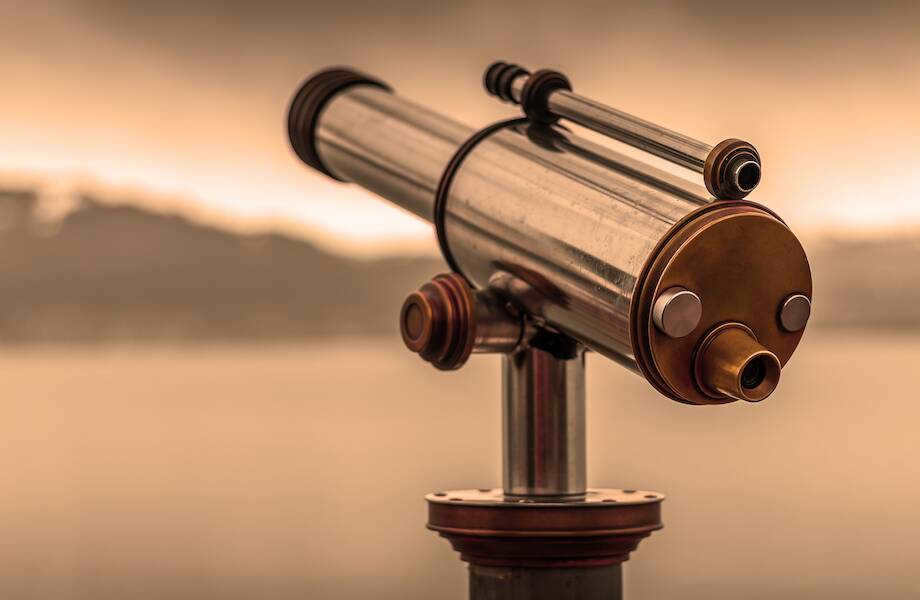
The Sun is both a captivating and perilous celestial object. It is strongly advised against gazing directly at the Sun, as doing so for even a few seconds can result in retinal damage. Looking at the Sun through an unprepared telescope is even more hazardous, risking permanent loss of eyesight. Below, we will provide guidelines on how to safely observe and appreciate the Sun.
Enchanting attractiveness
We have also informed you about the process of constructing mirrors for enormous telescopes.
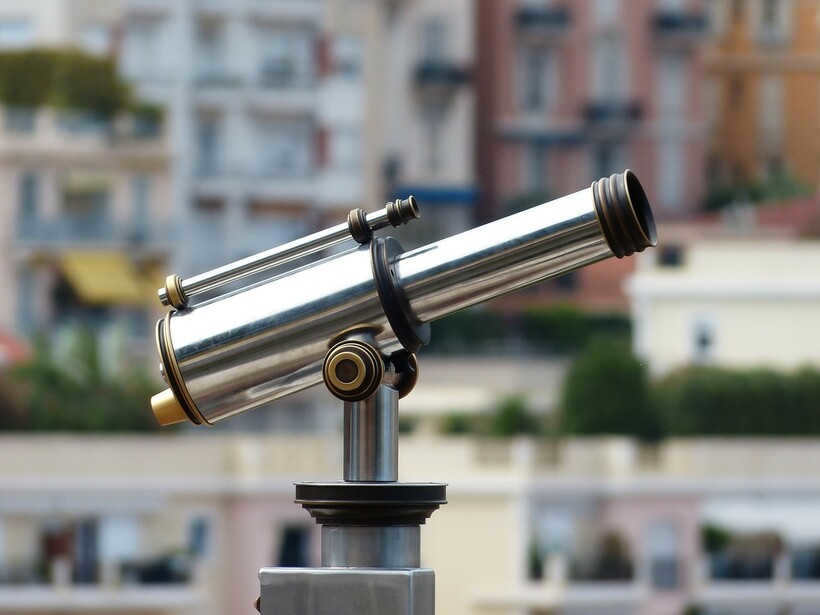
Approaches used by NASA
Modern space telescopes are able to continuously monitor the Sun without any interference from the Earth’s atmosphere. NASA’s Solar Dynamics Observatory, which was launched in February 2011, is at the forefront of solar research. The observatory is equipped with advanced probes that capture images of the Sun every 10 seconds. These probes have an exceptional resolution, 10 times higher than that of an HDTV, and they capture each image in eight different wavelengths of light. Although the Sun emits light in all visible colors, our eyes perceive it as white or yellow due to the way our brains process the different colors. However, by focusing on different wavelengths, scientists can capture images of different temperature layers within the Sun. This groundbreaking technology allows researchers to gain a deeper understanding of the inner workings of a burning star.
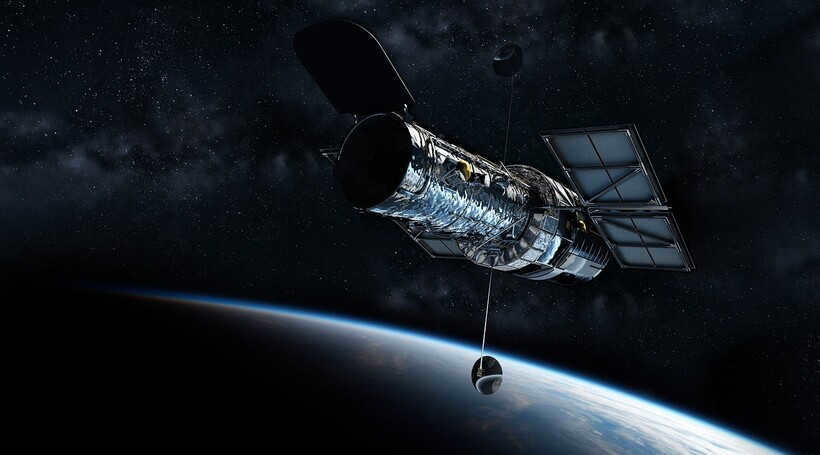
Disabling the Sun
In case you lack a solar telescope and aren’t affiliated with a NASA observatory, there is an alternative method to observe the Sun – by witnessing a total solar eclipse. Normally, the Sun’s rays are incredibly bright, prompting our bodies to activate protective measures like blinking, tear production, and pupil constriction. However, during a solar eclipse, the moon obstructs the rays to a significant extent, resulting in the appearance of a faint solar halo that poses no harm to our eyes.
